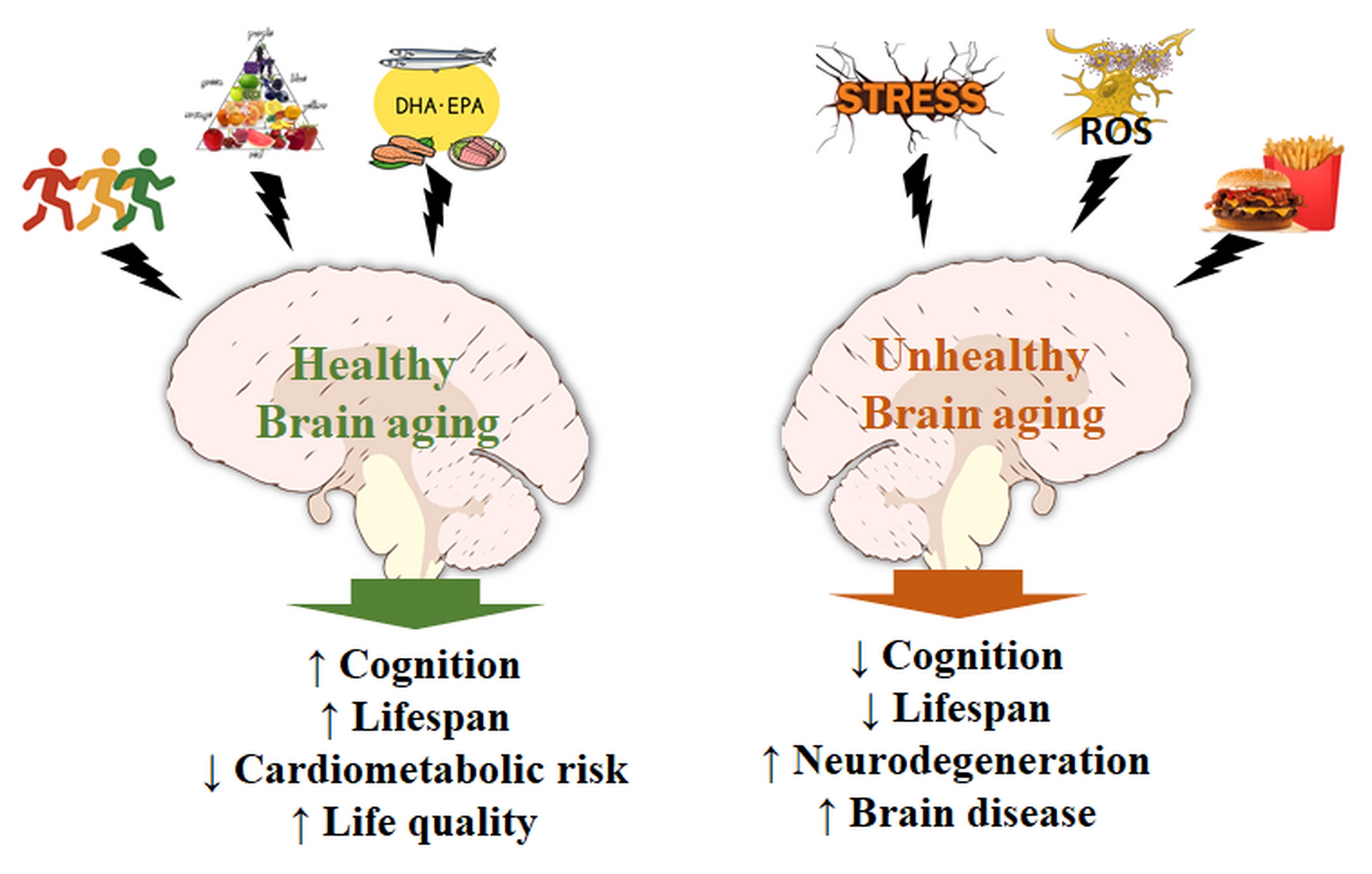Preprint
Review
Fatty Acids, Antioxidants and Physical Activity in Brain Aging
Altmetrics
Downloads
863
Views
1476
Comments
1
A peer-reviewed article of this preprint also exists.
Submitted:
01 October 2017
Posted:
02 October 2017
You are already at the latest version
Alerts
Abstract
Polyunsaturated fatty acids (PUFAs) and antioxidants are important mediators in the central nervous system (CNS). Lipid derivatives may be used to generate endocannabinoids or prostanoids derived from arachidonic acid, which attenuates excitotoxicity in quadripartite synapses with a focus in astrocytes and microglia; on the other hand, antioxidants, such as glutathione (GSH) and ascorbate, have been shown to signal through transmitter receptors and protect against acute and chronic oxidative stress, modulating the activity of different signaling pathways. Several authors have investigated the role of these nutrients in young and senescent brain, as well as in degenerative conditions such as Alzheimer’s and Parkinson's diseases. Through literature review, we aimed to highlight recent data on the role of fatty acids, antioxidants and physical activity in physiology and in molecular mechanisms of brain senescence. Data indicate the complexity and essentiality of endogenous/dietary antioxidants for maintenance of the redox status and control of neuroglial signaling under stress. Recent studies also indicate that omega-3 and -6 fatty acids act in a competitive manner to generate mediators for energy metabolism, feeding behavior, plasticity and memory mechanisms throughout aging. Finding pharmacological or dietary resources that mitigate or prevent neurodegenerative affections continues to be a great challenge and require additional efforts from researchers, clinicians and nutritionists in the field.

Keywords:
Subject: Medicine and Pharmacology - Dietetics and Nutrition
Copyright: This open access article is published under a Creative Commons CC BY 4.0 license, which permit the free download, distribution, and reuse, provided that the author and preprint are cited in any reuse.
MDPI Initiatives
Important Links
© 2024 MDPI (Basel, Switzerland) unless otherwise stated






